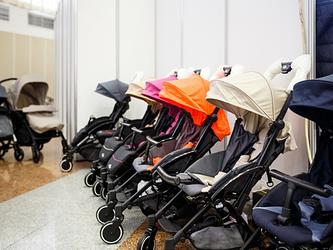Best behaviour: Common behavioural science mistakes

Behavioural change is not easy; we make errors or assumptions. With the widespread and growing application of behavioural science, it’s worth stepping back to look at some of the common errors in trying to solve behavioural challenges.
In a recent article, scientists Michael Kelly and Mary Barker analysed what they see as the six most common errors and mistakes in behaviour change in a health context. It’s easy to see that these are also present in other contexts.
By grouping the six errors into three areas, we can illustrate each one and set out the implications, exploring the mindset and approaches that behavioural change practitioners should adopt.
Not taking an evidence-based approach
Over-reliance on common sense and intuition: We often have a strong feeling that we intuitively know how to change someone’s behaviour: we just need to use common sense. The impulse to act, based only on our own or peer-related anecdotal experience, is powerful. Adopting a science-led and evidence-based process can reap more success. We need to take the time to explore and decipher existing research on the behavioural problem. It’s rare that a behavioural challenge hasn’t already been tackled by others, so there is a lot we can learn.
The lesson here is to use objective research and evidence-based inputs.
Failing to examine reasons behind behaviour: Adopting the role of ‘behavioural detectives’ to understand reasons for an existing behaviour can often unlock a solution. Behavioural models such as COM-B can help to identify the causes of behaviours. Without understanding, interventions are much more likely to fail.
One example highlights how even stakeholders can be wrong. A project conducted by New York-based MDRC, to improve summer enrolment in courses at colleges in Ohio, found that colleges believed lack of financial aid was preventing enrolment. However, research found that students actually had enough grant funding, but found the funding process too demanding, cognitively. Research helped them design two very successful interventions that boosted enrolment and are now being scaled across other colleges.
The lesson here is to conduct deep behavioural research around existing behaviour.
Assuming that attitudinal change will automatically lead to behavioural change
Over-reliance on messaging to change behaviour: People assume that a simple and persuasive message will be enough to change behaviour. Messages can land well and can change attitudes, but this is no guarantee of long-lasting behavioural change. While there have been successful messaging campaigns, it’s often only a first step in aiding behaviour change. It is important to carry out behavioural research to see how messages connect with actual behavioural change and to design interventions that break down real barriers to behaviour.
During the pandemic, those countries that invested in easy access to testing, paid sick leave and care packages had more success in encouraging those who had tested positive for Covid-19-to isolate than countries that relied only on messaging. The UK provided very little financial or physical support to self-isolate, and only 18% of survey respondents said they had fully isolated, according to data collected by the Covid-19 Rapid Survey of Adherence to Interventions and Responses between March and August 2020.
In comparison, the New York City Test and Trace Corps helped Covid-19 patients to isolate and recover, providing resources, including hotel stays, food deliveries, cash assistance, treatment, testing and vaccinations. One survey found that, among NYC Covid-19 patients (positive or exposed), 97% and 94% of these groups respectively reported staying home during the recommended isolation period. Here, physical and financial assistance were more effective than messaging.
The lesson here is to design holistic, multi-point behaviour-change strategies.
Over-reliance on providing information to change behaviour: When people are assumed to behave rationally, we also assume that new information will change their behaviour. Even if people do change their beliefs and understanding, however, there are many barriers to behaviour change. Habits, ease of opportunity, and design of our surroundings can all get in the way.
For example, research into handwashing in Bangladesh found that 95% of people knew they should wash their hands before eating, but only around 8% did. Even after an awareness-building initiative, only 22% complied. In comparison, behaviour-focused handwashing initiatives that try to make it easy and motivating to handwash have worked better. For example, an Oxfam-led initiative to improve handwashing in refugee camps found that 70% of people washed their hands after the installation of easy-to-use, easy-to-access handwashing stations. Another initiative found that emotive drivers directed at mothers increased rates of handwashing among children, from 32% to 51%.
The lesson here is to make the consumer behavioural change journey as frictionless as possible.
Assuming that people and contexts are the same everywhere
Assuming people are either irrational or rational: The error is thinking it is homogeneously one or the other. People are neither rational or irrational, but may respond differently depending on their personal context and experience. One person’s irrationality may be another person’s rationality. The infuriating answer is that it depends on the context.
Everyone can think of times when they have acted foolishly, but in the same context, at another time, acted sensibly. Sometimes we’re tired, stressed, in a hurry, angry, cold, hungry; other times we’re well rested, well fed, calm and focused. All of these things affect our decision-making. We also need to recognise the role of automatic, habitual behaviours. Even if someone would prefer not to do a behaviour, if it is habitual, they may have little choice. Equally, the drive to preserve cognitive energy for the really important decisions means we sometimes make quick decisions using convenient shortcuts that may not be optimal.
The lesson here is to research and define what mindset people are in – for example, reflective, rational, automatic or impulsive.
Assuming behaviour is easy to predict: It can be tempting to predict the outcome of a particular behaviour-change intervention. Yet it’s hard to get it right, especially across different groups that may not fully understand one another’s behaviour. For example, neuroscientist Eveline Crone has found that interventions devised by adults to help adolescents often fail.
Even if a behaviour-change intervention has been effective in one context, it doesn’t mean it will be effective in others. While there have been effective interventions to encourage people to pay their taxes in the UK, for example, the same interventions completely backfired in Guatemala. Context is critical.
The lesson here is to acknowledge that behaviour is hard to predict and to take steps to understand the context.
This article was first published in the October 2022 issue of Impact.

We hope you enjoyed this article.
Research Live is published by MRS.
The Market Research Society (MRS) exists to promote and protect the research sector, showcasing how research delivers impact for businesses and government.
Members of MRS enjoy many benefits including tailoured policy guidance, discounts on training and conferences, and access to member-only content.
For example, there's an archive of winning case studies from over a decade of MRS Awards.
Find out more about the benefits of joining MRS here.














0 Comments